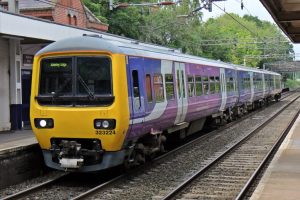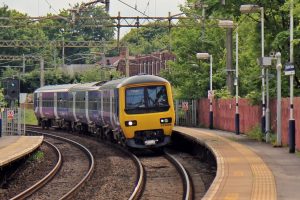Introduction
In the realm of modern commuter train travel, the Class 323 stands as a pioneering example of efficiency, reliability, and versatility. Designed and built in the United Kingdom, this electric multiple unit (EMU) train has left an indelible mark on the British rail network. With its unique blend of innovative features and passenger-centric design, the Class 323 continues to set a high bar for urban transportation.
A Brief History
The origins of the Class 323 trace back to the late 1980s whe
Design and Features
One of the most remarkable aspects of the Class 323 is its modular design, allowing for flexibility and customization according to the demands of various urban rail networks. The train’s interior layout maximizes passenger space, providing comfortable seating and ample standing room. The large windows not only create an airy ambiance but also offer passengers stunning views of the surrounding landscapes.
The Class 323 boasts several features that enhance the overall travel experience. Air conditioning ensures a pleasant environment throughout the year, while accessibility is prioritized with facilities for passengers with reduced mobility. Furthermore, the train’s regenerative braking system not only reduces energy consumption but also minimizes wear and tear on the braking components.
Technological Advancements
Equipped with advanced technology, the Class 323 showcases the evolution of rail transport. The train operates using a 25 kV AC overhead power supply system, making it highly efficient and environmentally friendly. The inclusion of regenerative braking technology not only reduces energy consumption but also aids in reducing the overall carbon footprint.
The train’s traction control system allows for precise acceleration and deceleration, ensuring smooth rides and minimizing wear on the tracks. Furthermore, the Class 323 is equipped with state-of-the-art safety features, including automatic train protection (ATP) and automatic door operation, enhancing passenger safety and operational efficiency.
Impact on Commuter Travel
Since its introduction, the Class 323 has revolutionized commuter travel. Its ability to handle high passe
nger volumes and operate reliably has made it a staple on numerous urban rail networks across the UK. The train’s dependable performance has led to increased punctuality, reduced overcrowding, and improved passenger satisfaction.
The Class 323’s impact extends beyond its primary function as a commuter train. Its adaptability and modularity have made it a prime choice for special events and transportation services. The train’s versatility in meeting the varied demands of both daily commuting and special occasions underscores its value within the broader transportation ecosystem.
Looking Ahead
As the rail industry continues to evolve, the Class 323 remains a stalwart presence in the landscape of commuter travel. Its reliability, comfort, and technological advancements make it a benchmark for future designs. As urban centers grow and the demand for efficient public transportation increases, the Class 323’s legacy of excellence continues to pave the way for innovative solutions to modern transportation challenges.
The Class 323 has rightfully earned its place as a pioneering example of commuter excellence. From its inception, its innovative design, advanced technology, and positive impact on commuter travel have solidified its role as a beacon of efficiency and comfort. As the rail industry forges ahead, the Class 323’s legacy will undoubtedly endure, serving as an inspiration for the next generation of commuter trains.







